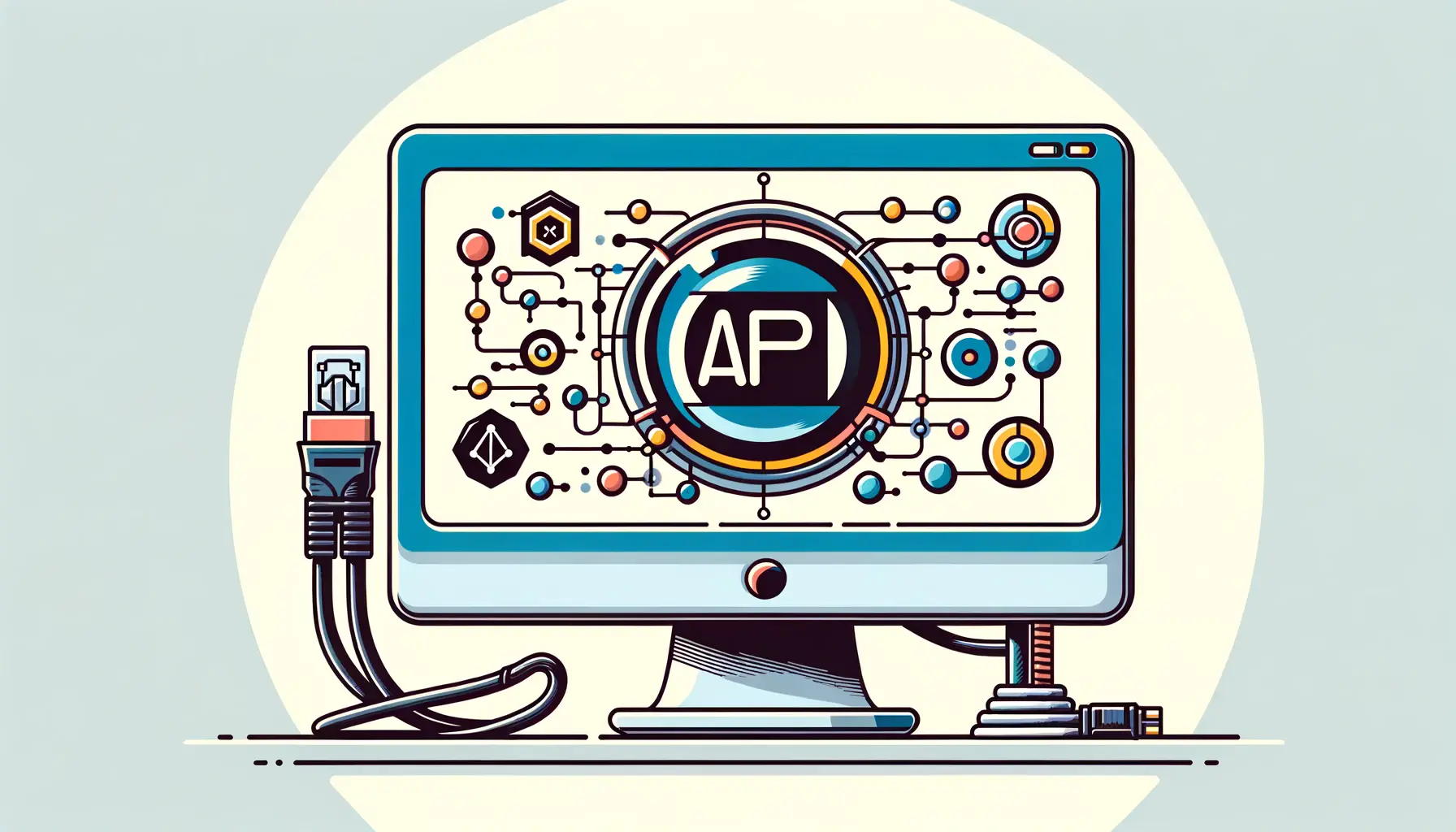The digital landscape is evolving at an unprecedented pace, fundamentally altering how we interact with technology, content, and services.
At the heart of this transformation lies the adoption of subscription models, particularly within the realm of ChatGPT’s DALL-E and similar AI-driven platforms.
These models have not only revolutionized the way access is granted to digital assets but have also paved the way for innovative approaches to content creation and distribution.
Subscription models, characterized by their ability to provide continuous access to products or services in exchange for regular payments, have become increasingly popular across various sectors.
This trend is especially pronounced in the technology and creative industries, where the demand for fresh, high-quality content and cutting-edge tools remains high.
By focusing on the keyword ‘access,’ this article delves into the intricacies of subscription models, exploring their benefits, challenges, and impact on both providers and consumers within the ChatGPT’s DALL-E ecosystem.
- The Evolution of Subscription Models
- Key Components of Successful Subscription Models
- Challenges and Solutions in Subscription Models
- Impact of Subscription Models on Consumer Behavior
- Strategies for Enhancing Subscriber Engagement
- Future Trends in Subscription Models
- Optimizing Subscription Models for Maximum Growth
- Embracing the Future of Access: A Conclusion
- Subscription Models for Access FAQs
The Evolution of Subscription Models
From Ownership to Access
The shift from traditional ownership to subscription-based access marks a significant change in consumer behavior and business strategies.
Historically, the acquisition of software, digital art, and other creative works was predominantly ownership-based, requiring a one-time payment for perpetual use.
However, the digital age has ushered in a preference for access over ownership, driven by the desire for flexibility, affordability, and the continuous delivery of value.
This transition is vividly illustrated in the realm of digital art and AI technologies, where subscription models offer users ongoing access to the latest tools, features, and content updates.
Such models ensure that both creators and users remain at the cutting edge of technological advancements, fostering a dynamic environment of continuous improvement and innovation.
Benefits of Subscription Models
Subscription models boast several advantages, including predictable revenue streams for providers and cost-effectiveness for consumers.
For businesses, the ability to forecast income with greater accuracy facilitates better resource allocation and strategic planning.
Consumers, on the other hand, benefit from lower upfront costs and the flexibility to upgrade or downgrade services according to their needs and preferences.
Moreover, subscription models encourage a closer relationship between service providers and their customers.
Regular interactions, prompted by monthly or annual renewals, provide valuable insights into consumer behavior, preferences, and feedback, enabling providers to tailor their offerings more effectively.
This symbiotic relationship enhances user satisfaction and loyalty, which are crucial for long-term success in the digital marketplace.
Subscription models transform the way we access and interact with digital content, fostering a culture of continuous engagement and innovation.
Key Components of Successful Subscription Models
The success of a subscription model hinges on several key components that ensure both customer satisfaction and business sustainability.
Understanding these elements is crucial for any entity looking to implement or refine a subscription-based approach, especially in fields as dynamic and innovation-driven as ChatGPT’s DALL-E and similar AI technologies.
Value Proposition
At the core of any successful subscription model lies a compelling value proposition.
This defines the unique benefits and solutions that the service offers, distinguishing it from competitors.
For AI-driven platforms, the value proposition might include exclusive access to cutting-edge tools, a constantly expanding library of resources, or personalized content that evolves with user preferences.
Ensuring that subscribers perceive the value of the service as exceeding the cost is fundamental.
This perception of value encourages initial sign-ups and fosters long-term loyalty, reducing churn rates and building a stable subscriber base.
Customer Experience and Flexibility
A seamless customer experience is paramount in subscription models.
From the ease of signing up and managing accounts to the quality of customer support and the simplicity of cancelling subscriptions, every touchpoint matters.
Enhancing the customer experience with intuitive interfaces, responsive support, and transparent policies can significantly impact satisfaction and retention.
Flexibility in subscription terms also plays a critical role.
Offering a range of plans, including trial periods, monthly and annual options, and easy plan changes, caters to diverse customer needs and preferences, making the service more attractive to a broader audience.
Pricing Strategy
Developing an effective pricing strategy is another essential component.
The strategy must strike a balance between being competitive and ensuring profitability.
It should reflect the value provided while also considering market standards and consumer expectations.
- Competitive Analysis: Regularly review competitor pricing and offerings to ensure your subscription remains compelling.
- Cost-Value Balance: Align pricing with the perceived value to avoid underpricing or overpricing, which could deter potential subscribers.
- Transparency: Ensure pricing structures are clear and straightforward, with no hidden fees that could erode trust.
Continuous Improvement and Innovation
The digital landscape is continually evolving, necessitating ongoing improvement and innovation in subscription offerings.
For platforms powered by AI, like ChatGPT’s DALL-E, staying ahead of technological advancements and incorporating user feedback into product development are critical for maintaining relevance and appeal.
Regular updates, feature enhancements, and the introduction of new services based on subscriber input and market trends can help sustain interest and engagement, ensuring that the subscription model remains dynamic and responsive to changing needs.
Incorporating feedback loops and analytics into the subscription model can drive continuous improvement, tailoring the service to better meet user expectations and industry standards.
Challenges and Solutions in Subscription Models
While subscription models offer numerous benefits and opportunities for businesses and consumers alike, they also present unique challenges.
Addressing these effectively is crucial for the sustainability and growth of subscription-based services, especially in the rapidly evolving sectors of AI and digital content creation, like ChatGPT’s DALL-E.
Understanding the common hurdles and implementing strategic solutions can help businesses navigate the complexities of subscription models, ensuring a mutually beneficial relationship between providers and subscribers.
Subscriber Churn
Subscriber churn, the rate at which customers cancel their subscriptions, poses a significant challenge.
High churn rates can undermine the financial stability of a subscription service, making it difficult to plan and invest in future growth.
- Engagement Strategies: Regularly introducing new features, content, and personalized experiences can keep subscribers engaged and reduce the likelihood of churn.
- Feedback Loops: Actively seeking and responding to subscriber feedback helps in addressing concerns and improving the service, thereby enhancing subscriber satisfaction and loyalty.
Price Sensitivity
Price sensitivity is another challenge, with subscribers often comparing the cost of subscription services against perceived value and available alternatives.
Striking the right balance between pricing and value is essential for attracting and retaining subscribers.
- Value Enhancement: Continuously adding value to the subscription, either through content, features, or personalized services, can justify the price and mitigate sensitivity concerns.
- Flexible Pricing Models: Offering a variety of pricing options, including tiered plans and promotional discounts, can cater to a wider range of price sensitivities and preferences.
Market Saturation
As more businesses adopt subscription models, market saturation becomes a challenge, making it harder to stand out and attract subscribers.
Differentiation through unique value propositions and innovative offerings is key to overcoming this challenge.
- Innovation: Continually evolving the service with innovative features and exclusive content can distinguish a subscription service in a crowded market.
- Niche Targeting: Focusing on specific niches or underserved markets can provide a competitive edge and attract a dedicated subscriber base.
Technological Integration
Ensuring seamless technological integration and user experience across various platforms and devices is crucial but challenging.
This is especially true for AI-driven services, where the complexity of the technology can impact user accessibility and satisfaction.
- User-Centric Design: Prioritizing ease of use and intuitive design in the service interface can enhance user experience and satisfaction.
- Cross-Platform Compatibility: Ensuring the service is accessible and fully functional across a range of devices and platforms broadens its appeal and usability.
Addressing the challenges of subscriber churn, price sensitivity, market saturation, and technological integration with strategic solutions can significantly enhance the success and sustainability of subscription models.
Impact of Subscription Models on Consumer Behavior
The rise of subscription models has had a profound impact on consumer behavior, reshaping expectations and interactions with products and services across various industries.
This shift is particularly evident in the realm of digital content and AI-driven platforms, where the demand for continuous access and innovation is high.
Understanding these changes in consumer behavior is essential for businesses looking to capitalize on the subscription economy.
Shift Towards Access Over Ownership
One of the most significant changes is the shift from a desire for ownership to a preference for access.
Consumers are increasingly valuing the flexibility and variety that subscription services offer over the permanence of owning a single product.
This trend is driven by the appeal of having a wide range of options and the ability to switch or upgrade services easily.
This shift has led to a more dynamic relationship between consumers and service providers, with ongoing engagement and feedback becoming central to the subscription experience.
It reflects a broader move towards a more experiential and service-oriented economy, where the quality of the experience is as important as the product itself.
Expectation for Personalization and Flexibility
Subscription models have also heightened consumer expectations for personalization and flexibility.
Subscribers expect services to tailor their offerings to individual preferences and needs, leveraging data and AI to enhance the user experience.
This demand for personalization extends to pricing, with consumers seeking plans that reflect their usage patterns and perceived value.
The ability to modify or cancel subscriptions easily is another aspect of this flexibility.
Consumers appreciate the freedom to adjust their subscriptions based on changing needs or dissatisfaction with the service, without facing prohibitive penalties or complex cancellation processes.
Increased Value Consciousness
Subscription models have made consumers more value-conscious, prompting them to evaluate the ongoing worth of a service.
This scrutiny means that businesses must continuously prove their value to retain subscribers.
The emphasis on value has encouraged companies to focus on quality, customer satisfaction, and innovation as key drivers of subscriber loyalty.
Moreover, the competitive nature of the subscription market means that consumers have more choices than ever before.
This abundance of options has empowered subscribers to demand more from their chosen services, from exceptional customer support to exclusive content and features.
The impact of subscription models on consumer behavior underscores a broader shift towards access, personalization, and value, challenging businesses to adapt and innovate continuously.
Strategies for Enhancing Subscriber Engagement
Engaging subscribers effectively is crucial for the success and longevity of subscription models.
In a landscape where consumers are bombarded with choices, maintaining high levels of engagement can be the difference between a thriving subscription service and one that struggles to retain its user base.
Here are strategies that can help enhance subscriber engagement, particularly in the context of AI-driven platforms like ChatGPT’s DALL-E.
Personalized Content and Recommendations
Personalization is key to capturing and retaining subscriber interest.
By leveraging data analytics and AI, subscription services can offer personalized content and recommendations that resonate with individual preferences and behaviors.
This approach not only enhances the user experience but also fosters a sense of connection between the subscriber and the service.
- Utilize user data to tailor content offerings and recommendations.
- Implement AI algorithms to predict and serve user preferences effectively.
Regular Updates and New Features
Continuously updating the service with new features, content, and improvements keeps the offering fresh and engaging.
Subscribers are more likely to remain interested and invested in a service that consistently evolves and adapts to their changing needs and interests.
- Introduce regular updates and feature enhancements based on user feedback and market trends.
- Communicate updates and new features to subscribers through newsletters, notifications, and personalized messages.
Exclusive Offers and Loyalty Rewards
Creating a sense of exclusivity and rewarding loyalty can significantly boost subscriber engagement.
Exclusive offers, early access to new features, and loyalty rewards programs encourage subscribers to maintain their subscriptions and engage more deeply with the service.
- Develop loyalty programs that offer rewards based on subscription duration or activity levels.
- Provide exclusive access to premium content or features for long-term subscribers.
Community Building and Interaction
Building a community around the subscription service can create a sense of belonging and increase engagement.
Encouraging interaction among subscribers through forums, social media, and events can foster a vibrant community that supports and enhances the overall experience.
- Establish online forums or social media groups where subscribers can interact, share experiences, and provide feedback.
- Organize virtual or in-person events to strengthen the community and encourage networking among subscribers.
Implementing personalized content, regular updates, exclusive offers, and community-building efforts are effective strategies for enhancing subscriber engagement in subscription models.
Future Trends in Subscription Models
The subscription model landscape is continuously evolving, driven by technological advancements, changing consumer preferences, and the dynamic nature of the digital economy.
As we look towards the future, several trends are emerging that will shape the development and success of subscription-based services, especially in innovative fields like AI and digital content creation.
Increased Integration of AI and Machine Learning
Artificial Intelligence (AI) and machine learning are set to play even more significant roles in subscription models.
These technologies will enhance personalization, automate customer service, and improve predictive analytics, allowing for more sophisticated subscriber segmentation and tailored content delivery.
This integration will not only improve the user experience but also optimize operational efficiency and subscriber retention.
- Enhanced personalization through deeper learning about subscriber preferences.
- Automated customer support systems for more efficient issue resolution.
- Improved predictive analytics for better decision-making and service adjustments.
Expansion into New Markets and Niches
As subscription models mature, businesses will increasingly look to expand into new markets and niches.
This expansion will involve diversifying offerings to cater to specific interests, demographics, and geographic locations.
By tapping into underserved or niche markets, subscription services can attract new subscribers and foster a more diverse and engaged user base.
- Identification and targeting of niche markets with tailored offerings.
- Localization of content and services to appeal to different geographic markets.
Greater Focus on Sustainability and Social Responsibility
Consumer demand for sustainability and social responsibility is growing, and subscription models are no exception.
Future trends will likely include a greater emphasis on eco-friendly practices, ethical sourcing, and community support.
Subscription services that align with these values can differentiate themselves in a crowded market and build stronger, more loyal relationships with their subscribers.
- Implementation of eco-friendly packaging and digital delivery methods.
- Support for social causes and community initiatives as part of the subscription offering.
Hybrid Models Combining Subscription with Other Revenue Streams
The future will also see the rise of hybrid models that combine subscription services with other revenue streams, such as one-time purchases, freemium models, and advertising.
This diversification will allow businesses to cater to a broader range of consumer preferences and financial models, enhancing the overall appeal and sustainability of the subscription service.
- Introduction of additional revenue streams to complement the subscription model.
- Flexibility in service offerings to accommodate different user preferences and needs.
The future of subscription models is poised for significant transformation, with AI integration, market expansion, a focus on sustainability, and hybrid revenue models leading the way.
Optimizing Subscription Models for Maximum Growth
To ensure the sustained growth and success of subscription models, businesses must adopt a strategic approach that encompasses various aspects of operations, marketing, and customer engagement.
Optimizing these models requires a deep understanding of market dynamics, consumer behavior, and technological trends.
Here are key strategies for businesses aiming to maximize the growth potential of their subscription models.
Enhancing User Experience
At the heart of any successful subscription model is a superior user experience.
This encompasses everything from the initial sign-up process and user interface to customer service and the ease of cancellation.
Simplifying these processes and ensuring a frictionless experience can significantly improve customer satisfaction and retention rates.
- Streamline the sign-up and onboarding process to reduce barriers to entry.
- Invest in a user-friendly interface that simplifies navigation and access to content.
- Provide exceptional customer service to address issues promptly and maintain subscriber satisfaction.
Leveraging Data Analytics for Personalization
Data analytics play a crucial role in understanding subscriber preferences and behavior.
By leveraging this data, businesses can personalize content, recommendations, and marketing messages, thereby enhancing the subscriber experience and increasing engagement.
- Utilize subscriber data to tailor content and recommendations to individual preferences.
- Implement targeted marketing campaigns based on subscriber behavior and interests.
- Analyze churn data to identify patterns and develop strategies to mitigate subscriber loss.
Adopting Flexible Pricing Models
Flexibility in pricing is essential for attracting and retaining a diverse subscriber base.
Offering a variety of pricing options, including tiered subscriptions, discounts for longer commitments, and promotional trials, can cater to different budgetary constraints and value perceptions.
- Introduce tiered subscription options to provide choices based on features and access levels.
- Offer promotional pricing and discounts to new subscribers and for long-term commitments.
- Consider a freemium model that allows users to experience the service before committing to a paid subscription.
Expanding Market Reach
Expanding into new markets and demographics is another strategy for growth.
This may involve localizing content for different regions, adapting marketing strategies to target new segments, or exploring partnerships that can introduce the subscription service to new audiences.
- Localize content and marketing efforts to appeal to different geographic and demographic markets.
- Partner with other businesses or platforms to cross-promote subscription services.
- Explore new channels for subscriber acquisition, including social media, influencer partnerships, and content marketing.
Optimizing subscription models involves enhancing user experience, leveraging data for personalization, adopting flexible pricing, and expanding market reach to ensure maximum growth and sustainability.
Embracing the Future of Access: A Conclusion
The exploration of subscription models for access within the dynamic realms of AI and digital content creation, notably ChatGPT’s DALL-E, reveals a transformative shift in how services and products are consumed and offered.
This article has traversed the evolution, benefits, challenges, and strategies surrounding subscription models, underscoring their profound impact on consumer behavior, business strategies, and the broader market landscape.
As we stand on the cusp of further digital evolution, the insights gleaned from this comprehensive analysis illuminate the path forward for businesses and consumers alike.
The Paradigm Shift in Consumption
Subscription models have catalyzed a paradigm shift from ownership to access, reflecting a deeper change in consumer values and expectations.
This shift is not merely a trend but a fundamental change in the marketplace, emphasizing flexibility, personalization, and continuous engagement.
The success stories and challenges highlighted throughout this discussion underscore the necessity for businesses to adapt to this evolving landscape, prioritizing customer experience and value above all.
Strategies for Sustainable Growth
The strategies for enhancing subscriber engagement and optimizing subscription models for growth delineate a roadmap for businesses aiming to thrive in this competitive environment.
From leveraging AI for personalized experiences to adopting flexible pricing models and expanding market reach, these strategies are pivotal for businesses to remain relevant and grow.
The future trends in subscription models, including increased AI integration and a focus on sustainability, further highlight the need for innovation and adaptability in strategy formulation.
Key Takeaways for Businesses and Consumers
- Subscription models offer a win-win scenario for businesses and consumers, fostering a relationship based on continuous value exchange and adaptation.
- Understanding and responding to the challenges of subscription models, such as subscriber churn and market saturation, are crucial for long-term success.
- The future of subscription models is bright, with opportunities for growth and innovation, particularly through the integration of AI and machine learning, expansion into new markets, and a focus on sustainability.
In conclusion, the journey through the intricacies of subscription models for access has revealed their transformative potential and enduring impact on the digital economy.
For businesses, the path forward involves embracing these models with a strategic approach centered on innovation, customer satisfaction, and adaptability.
For consumers, this evolution promises a future where access to services and content is more personalized, flexible, and aligned with their evolving needs and values.
As we navigate this changing landscape, the insights and strategies discussed herein will serve as a guiding light, ensuring that the potential of subscription models is fully realized in the era of digital transformation.
Subscription Models for Access FAQs
Explore common questions about subscription models for access, offering insights into how they work, their benefits, and their impact.
A subscription model for access provides ongoing use of a product or service in exchange for regular payments, enhancing continuous engagement and value delivery.
They offer flexibility, cost-effectiveness, and access to a wide range of services or content, tailored to meet evolving consumer needs and preferences.
Key challenges include managing subscriber churn, balancing price sensitivity, differentiating in saturated markets, and integrating advanced technologies seamlessly.
Yes, through personalized content, regular updates, exclusive offers, and community-building activities, subscription models can significantly enhance customer engagement.
AI enhances personalization, automates customer service, and improves predictive analytics, leading to better subscriber segmentation and tailored content delivery.
Yes, including access-based, curation, replenishment, and membership models, each offering unique benefits and targeting different consumer needs.
They shift consumer preferences towards access over ownership, increase demand for personalization, and raise expectations for flexibility and value.
Future trends include greater AI integration, expansion into new markets, a focus on sustainability, and the development of hybrid models combining subscriptions with other revenue streams.













